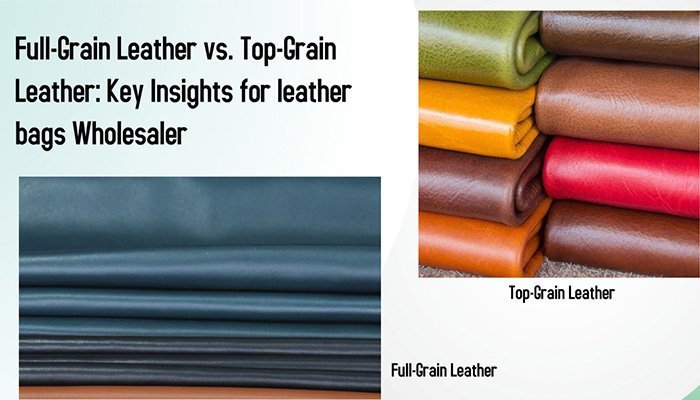1. Introduction
1.1 Overview of the Wholesale Bag Market in the USA
Hey there! If you’ve ever wandered through a bustling American marketplace or browsed online stores, you’ve probably noticed just how diverse and vibrant the wholesale bag market in the USA is. From chic leather handbags to sturdy backpacks, the demand is skyrocketing. In fact, the market is projected to soar to billions by 2025 (Statista). Whether you’re a seasoned retailer or just dipping your toes into the wholesale world, understanding this booming market is your first step toward success.
Let me share a little story. A friend of mine started selling eco-friendly totes and quickly realized that sustainability wasn’t just a trend—it was a movement. By tapping into this growing demand, her business flourished, proving that knowing what’s hot in the market can make all the difference.
1.2 Importance of Efficient Shipping and Transportation
Now, let’s talk shipping. Imagine you’ve found the perfect supplier in China, but when your bags finally arrive, they’re damaged or delayed. Frustrating, right? Efficient shipping and transportation aren’t just logistics—they’re the backbone of your business’s profitability and customer satisfaction. Reliable delivery keeps your inventory stocked and your customers happy, fostering loyalty and positive reviews (Forbes).
I remember when I first started importing bags. One delayed shipment taught me the hard way how crucial timely delivery is. From that experience, I learned to prioritize efficient shipping methods to keep my business running smoothly and my customers smiling.
2. Understanding the US Market for Wholesale Bags
2.1 Market Trends and Consumer Preferences
Staying ahead of market trends is like having a secret weapon. US consumers love bags that blend style with functionality. There’s a noticeable shift towards sustainable materials—think recycled fabrics and vegan leather. Plus, seasonal demand plays a big role. Back-to-school seasons, holidays, and fashion weeks see spikes in sales. Keeping your finger on the pulse of these trends ensures your inventory aligns with what buyers are craving (FashionUnited).
Let me tell you about another friend who pivoted her bag designs to include more sustainable options. Not only did her sales increase, but her brand also gained a loyal following of eco-conscious consumers. It’s all about adapting to what your customers want!
2.2 Key Regions and Distribution Channels in the USA
When it comes to selling wholesale bags, location matters. Major metropolitan areas like New York, Los Angeles, and Chicago are hotbeds of demand thanks to their large retail markets and fashion-forward populations. But it’s not just about where you sell—it’s also about how you sell. Online platforms are booming, offering wholesalers a broader reach and lower overhead compared to traditional brick-and-mortar stores (Business Insider).
I remember setting up my first online store and being amazed at how quickly orders started pouring in from all over the country. The flexibility of online sales opened up new opportunities and allowed me to reach customers I never could have before.
2.3 Target Audience and Buyer Expectations
Understanding who you’re selling to is key. Wholesale bag buyers in the USA range from large retailers to individual entrepreneurs. Retailers often prioritize quality, competitive pricing, and reliable delivery times. On the other hand, individual buyers might focus more on unique designs and brand reputation. Tailoring your offerings and service levels to meet these varied expectations can set you apart (Harvard Business Review).
For instance, catering to retailers might mean offering bulk discounts and ensuring consistent quality, while appealing to individual buyers could involve highlighting unique styles and exclusive designs. Balancing these needs can help you capture a broader market.
3. Choosing the Right Shipping Method
Selecting the appropriate shipping method is crucial for optimizing cost, delivery speed, and overall supply chain efficiency. This section explores various shipping options, their advantages and disadvantages, transit times from China to both the East and West Coasts of the USA, and scenarios where each method is most effective.
3.1 Air Freight
Advantages
Air freight stands out as the premier choice for expedited and reliable shipments. This method is particularly advantageous for high-value or time-sensitive goods, such as premium bags, ensuring swift delivery to the USA. The reduced lead times inherent in air transport help maintain inventory freshness and respond promptly to market demands. Additionally, air freight minimizes the risk of damage and theft compared to other shipping modes, providing enhanced security for valuable shipments (Air Freight Guide).
Disadvantages
However, the benefits of air freight come with higher costs. Air transport is significantly more expensive than sea or land freight, which can impact overall profitability, especially for large or bulk orders. Furthermore, aircraft have limited cargo capacity, making air freight less suitable for large-scale shipments where cost-efficiency is paramount. Additionally, air freight is subject to strict regulations and restrictions on certain types of goods, potentially complicating the shipping process.
Transit Times
- China to East Coast USA (e.g., New York, Miami): Approximately 3-7 days
- China to West Coast USA (e.g., Los Angeles, San Francisco): Approximately 3-7 days
When to Use Air Freight
Opt for air freight when speed is a critical factor, such as launching a seasonal collection or addressing an unexpected surge in demand. This method is ideal for ensuring that your products reach the market quickly, maintaining a competitive advantage and meeting customer expectations for fast delivery (Investopedia).
3.2 Sea Freight
Advantages
Sea freight is the most cost-effective option for transporting large and bulky shipments. It offers substantial cargo capacity, making it ideal for bulk orders of bags and other merchandise. Additionally, sea freight provides flexibility in terms of shipping schedules and routes, accommodating various logistical requirements (Marine Insight). The lower cost per unit makes sea freight a preferred choice for businesses aiming to maximize profit margins on large shipments.
Disadvantages
The primary drawback of sea freight is the longer transit time, typically ranging from two to six weeks depending on the origin and destination ports. This extended duration can delay product availability and may not be suitable for time-sensitive inventory replenishments. Moreover, sea freight is susceptible to delays caused by port congestion, adverse weather conditions, and regulatory inspections, which can disrupt the supply chain and affect delivery timelines.
Transit Times
- China to East Coast USA (e.g., New York, Miami): Approximately 25-35 days
- China to West Coast USA (e.g., Los Angeles, San Francisco): Approximately 15-25 days
When to Use Sea Freight
Sea freight is best utilized for bulk orders and non-urgent deliveries where cost savings are a priority over speed. It is particularly effective for maintaining a steady supply of products without the pressure of immediate market demands, allowing businesses to plan inventory and manage cash flow more efficiently (Freightos).
3.3 Land Transport
Trucking
Advantages
Trucking is an excellent option for domestic distribution within the USA, providing seamless integration with port arrivals for efficient last-mile delivery. This mode of transport offers significant flexibility in routing and scheduling, allowing businesses to tailor their logistics operations to specific regional needs. Trucking ensures timely delivery across various states, supporting the distribution network from ports to warehouses and retail locations (Transport Topics).
Transit Times
- East Coast Port to Final Destination: Typically 1-3 days
- West Coast Port to Final Destination: Typically 1-3 days
When to Use Trucking
Use trucking for the final leg of your supply chain once goods have arrived on the East or West Coast. It is ideal for ensuring that products reach warehouses or retail locations efficiently, supporting timely restocking and distribution.
Rail Transport
Advantages
Rail transport serves as a cost-effective alternative for long-distance inland shipments. It is an environmentally friendly option with a lower carbon footprint compared to road transport, aligning with sustainable business practices. Railways offer substantial capacity, making them suitable for transporting large quantities of bags over extensive distances. Additionally, rail transport can be more reliable than trucking in terms of avoiding traffic delays and providing scheduled services (Railway Gazette).
Transit Times
- From East Coast Port to Inland Destinations: Approximately 3-7 days
- From West Coast Port to Inland Destinations: Approximately 4-8 days
When to Use Rail Transport
Opt for rail transport when moving large volumes of goods across long distances within the USA. It is particularly beneficial for reducing transportation costs while maintaining a reliable delivery schedule, especially for non-urgent shipments that benefit from the cost savings of rail over trucking.
3.4 Air DDP (Delivered Duty Paid)
Advantages
Air DDP is an Incoterm where the seller assumes full responsibility for delivering the goods to the buyer’s destination, covering all costs and risks, including shipping, insurance, and import duties. This method simplifies the procurement process for buyers by providing a hassle-free delivery experience, ensuring that all logistical and regulatory requirements are managed by the seller (Incoterms Explained). Air DDP is particularly beneficial for buyers who prefer a turnkey solution without the complexities of handling multiple aspects of the shipping process.
Transit Times
- China to East Coast USA (e.g., New York, Miami): Approximately 7-12 days
- China to West Coast USA (e.g., Los Angeles, San Francisco): Approximately 7-12 days
When to Use Air DDP
Use Air DDP when you require a swift and comprehensive shipping solution that minimizes administrative burdens. It is ideal for high-value or time-sensitive shipments where the convenience of a single point of responsibility enhances operational efficiency.
3.5 SEA DDP (Sea Delivered Duty Paid)
Advantages
SEA DDP operates similarly to Air DDP but utilizes sea freight for transportation. This method is often considered the optimal shipping solution for wholesale bags due to its balance of cost-effectiveness and comprehensive service coverage. SEA DDP includes the handling of all import duties and logistics, streamlining the shipping process, and reducing the administrative burden on buyers (Shipping Solutions).
Transit Times
- China to East Coast USA (e.g., New York, Miami): Approximately 25-35 days
- China to West Coast USA (e.g., Los Angeles, San Francisco): Approximately 20-30 days
Integrated Services with Mherder
Partnering with Mherder enhances the SEA DDP experience by providing end-to-end logistics solutions tailored to your specific needs. Mherder efficiently manages transportation and customs clearance, ensuring that your bag shipments are delivered directly to your warehouse without delays or complications. This seamless integration allows you to rely on bagsplaza.com for handling all aspects of SEA DDP shipments, from origin to destination, ensuring a smooth and reliable supply chain.
When to Use SEA DDP
Choose SEA DDP when you require a cost-effective shipping method that still offers comprehensive service coverage. It is ideal for wholesale operations where managing large volumes of inventory is essential, and minimizing logistical complexities is a priority. SEA DDP is particularly advantageous for businesses seeking to outsource the complexities of international shipping and customs management, allowing them to focus on core activities such as sales and marketing.
By carefully evaluating each shipping method’s strengths and limitations, including their respective transit times from China to both the East and West Coasts of the USA, businesses can make informed decisions that align with their operational goals, budget constraints, and market demands. Whether prioritizing speed, cost-efficiency, or comprehensive service coverage, selecting the right shipping method is fundamental to maintaining a robust and responsive supply chain.
4. Packaging and Labeling Requirements
4.1 Proper Packaging Techniques
Protecting Products During Transit
Imagine the disappointment of receiving bags that are scratched or torn. Using durable materials is essential to prevent such mishaps. Think sturdy boxes, cushioning materials, and secure packing techniques to keep your products safe (Packaging Strategies).
Sustainable Packaging Options
Sustainability isn’t just a buzzword—it’s a commitment. Eco-friendly packaging options like biodegradable materials and recycled boxes not only protect the environment but also boost your brand image and ensure compliance with US regulations (Sustainable Packaging Coalition).
4.2 Labeling Standards
Compliance with US Regulations
Accurate labeling is a must for smooth customs clearance. Your labels should include product details, and handling instructions, and comply with US regulations to avoid any hiccups (U.S. Customs and Border Protection).
Information to Include on Labels
Don’t forget the essentials: SKU numbers, barcodes, tracking information, and manufacturer/importer details. This information ensures efficient tracking and inventory management once your bags arrive (Labeling Requirements).
5. Customs and Import Regulations
5.1 Necessary Documentation
Invoices and Packing Lists
Detailed invoices and packing lists are your tickets to hassle-free customs clearance. They need to accurately describe the goods and their values to assess import duties correctly (Export.gov).
Certificates of Origin and Compliance
Certificates of origin verify that your products meet US standards and regulations. Compliance certificates ensure your bags adhere to the necessary safety and quality standards required in the USA (International Trade Administration).
Import Licenses and Permits
Some products might require import licenses or permits. Knowing when and how to obtain these licenses is crucial to avoid legal issues and ensure smooth importation (CBP Import Requirements).
5.2 Import Duties and Taxes
Understanding Tariffs for Wholesale Bags
Tariffs can be tricky. They vary based on the type of bags and the trade agreements between China and the USA. Staying informed about these rates helps you calculate accurate costs (U.S. International Trade Commission).
Calculating Total Import Costs
Understanding the breakdown of total import costs—including duties, taxes, and additional fees—allows you to strategize and minimize expenses effectively (Duty Calculator).
6. Selecting Reliable Shipping Partners
6.1 Evaluating Freight Forwarders
Criteria for Choosing a Freight Forwarder
Choosing the right freight forwarder is like finding the perfect travel buddy. Look for experience with China-USA shipments, reliability, and a solid reputation in the industry. A good freight forwarder should offer comprehensive services, including handling customs clearance and documentation (Freight Forwarder Association).
Questions to Ask Potential Partners
Don’t be shy to ask the tough questions: What services do they offer? What are their transit times and cost structures? Do they support customs processes? These answers will help you find a partner that fits your specific shipping needs (Supply Chain Digital).
6.2 Insurance Options
Types of Shipping Insurance
Shipping insurance can be a lifesaver, covering loss, damage, and delays. Understanding the different types of insurance available helps you select the right coverage for your shipments (Insurance Information Institute).
Benefits of Insuring Your Shipments
Insuring your shipments provides financial protection and peace of mind. It ensures business continuity in case of unforeseen events, mitigating the risk of significant losses due to mishaps during transit (InsureMyGoods).
7. Managing Shipping Costs
7.1 Cost Factors
Weight, Volume, and Distance Considerations
Shipping costs aren’t just about the size of your shipment—they’re also influenced by weight, volume, and distance. Understanding how these factors affect shipping rates helps you budget effectively and choose the most cost-effective method (ShipBob).
Additional Fees and Surcharges
Be prepared for extra costs like fuel surcharges, port fees, and handling charges. Knowing about these potential fees upfront allows for better financial planning (Freightos).
7.2 Tips to Reduce Expenses
Consolidating Shipments
Combining smaller orders into a single shipment can achieve economies of scale, reducing the per-unit shipping cost. This strategy is especially effective for frequent shipments (BagsPlaza Shipping Tips).
Negotiating with Carriers
Building long-term partnerships with carriers can lead to better rates and terms. Negotiating based on volume and loyalty can result in significant cost savings (Logistics Management).
Optimizing Packaging for Cost Efficiency
Reducing dimensional weight and minimizing packaging materials can lower shipping costs. Efficient packaging ensures you pay only for the space and weight necessary (Packaging Strategies).
8. Tracking and Managing Shipments
8.1 Tracking Technologies
Tools and Software for Real-Time Tracking
Advanced tracking systems provide real-time updates on your shipment’s status, enhancing visibility and allowing you to proactively manage any issues that arise. Popular tracking platforms like ShipStation and AfterShip offer robust features to keep you in the loop (TechRadar).
Benefits of Advanced Tracking Systems
Using advanced tracking systems means you’re always in the know. Enhanced visibility allows for proactive issue resolution, ensuring that any delays or problems are addressed promptly to minimize the impact on your delivery schedules (Supply Chain Management Review).
8.2 Handling Delays and Issues
Strategies for Mitigating Delays
Building buffer time into your shipping schedules and diversifying your shipping methods can help avoid bottlenecks and mitigate delays. Having contingency plans ensures that your shipments can be rerouted or expedited if necessary (Supply Chain Dive).
Communicating with Stakeholders During Disruptions
Clear communication is key during disruptions. Keeping your buyers informed and managing their expectations helps maintain trust. Collaborate with your shipping partners to resolve issues swiftly, ensuring your customers remain satisfied (Harvard Business Review).
9. Best Practices for Successful Shipping
9.1 Ensuring Timely Deliveries
Accurate scheduling and planning are your best friends when it comes to timely deliveries. Leveraging technology for efficient logistics management can streamline operations and reduce the likelihood of delays (Logistics Bureau).
9.2 Maintaining Product Quality
Proper handling and storage during transit are vital to maintaining product quality. Regular quality checks and audits help ensure that your bags arrive in excellent condition, preserving your brand reputation and customer satisfaction (Quality Assurance Institute).
9.3 Building Strong Relationships with Suppliers and Carriers
Strong relationships with your suppliers and carriers are the foundation of reliable shipping. Clear communication and mutual trust lead to better service, favorable rates, and more dependable shipping processes (Entrepreneur).
10. Conclusion
10.1 Recap of Key Points
Shipping wholesale bags from China to the USA involves a mix of understanding the market, choosing the right shipping methods, adhering to packaging and labeling requirements, navigating customs regulations, selecting reliable shipping partners, managing costs, and utilizing tracking technologies. Implementing these strategies ensures efficient and cost-effective transportation, enhancing your business’s profitability and customer satisfaction.
10.2 Final Tips for Optimizing Shipping and Transportation
Always strive for continuous improvement and stay updated with industry trends to optimize your shipping and transportation processes. Investing in reliable partners and advanced technologies can further streamline your operations and maintain a competitive edge in the wholesale bag market. By prioritizing efficiency and quality, you’re setting your business up for long-term success in the dynamic US market.
If you need to order high-end leather women’s bags, please visit bagsplaza.com. In addition to offering over 5000 different styles of women’s bags, they can efficiently handle transportation and customs for you.



